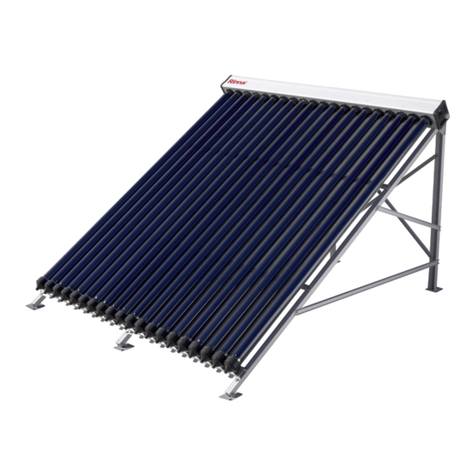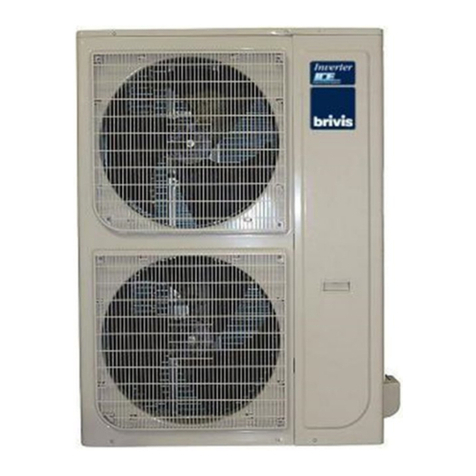
OPERATION / SAFETY
DO NOTusethisunitinlocationswhereammablegasmayexist.Ifammablegascomesintocontact
withtheunit,aremayoccur,whichcouldresultinseriousinjuryordeath.
Ifthisunitexhibitsanyabnormalbehaviour(suchasemittingsmoke)thereisadangerofseriousinjury.
Disconnect the power supply and contact your supplier or service engineer immediately.
The refrigerant in this unit is safe and should not leak if the system is designed and installed properly.
However, if a large amount of refrigerant leaks into a room, the oxygen concentration will decrease
rapidly,whichcancauseseriousinjuryordeath.Therefrigerantusedinthisunitisheavierthanair,so
the danger is greater in basements or other underground spaces. In the event of a refrigerant leak, turn
oanydevicesthatproduceanakedameandanyheatingdevices,ventilatetheroom,andcontactyour
supplier or service engineer immediately.
Toxicfumesmaybeproducediftherefrigerantinthisunitcomesintocontactwithnakedames(suchas
fromaheater,gasstove/burners,orelectricappliances).
Ifthisunitisusedinthesameroomasacooker,stove,hob,orburner,ventilationforsucientfreshair
mustbeensured,otherwisetheoxygenconcentrationwillfall,whichmaycauseinjury.
Dispose of this unit’s packaging carefully, so children cannot play with it. Packaging, especially plastic
packaging, can be dangerous, can cause serious injury or death. Screws, staples and other metal
packagingcomponentscanbesharpandshouldbedisposedofcarefullytoavoidinjury.
DO NOT attempt to inspect or repair this unit yourself. This unit should only be serviced and maintained
by a professional air conditioning service engineer. Incorrect servicing or maintenance can cause electric
shocks,reorwaterleaks.
This unit should only be re-positioned or re-installed by a professional technician. Incorrect installation
canleadtoelectricshocks,reorwaterleaks.Theinstallationandgroundingofelectricalappliances
should only be carried out by licensed professionals. Ask your supplier or installation engineer for further
information.
DO NOT allow this unit or its remote controller to come into contact with water, as this can lead to electric
shocksorre.
Turnotheunitbeforecleaningittoavoidelectricshocks.Otherwise,anelectricshockandinjurymay
result.
Toavoidelectricshocksandres,installanearthleakagedetector.
DO NOT use paint, varnish, hair spray, other ammable sprays or other liquids that may give o
ammablefumes/vapornearthisunit,asdoingsocancauseres.
When replacing a fuse, ensure that the new fuse to be installed completely complies with requirements.
DO NOT open or remove the unit’s panel when the unit is powered on. Touching the unit’s internal
componentswhiletheunitispoweredoncanleadtoelectricshocksorinjuriescausedbymovingparts
such as the unit’s fan.
Ensure that the power supply is disconnected before any servicing or maintenance is carried out.
DO NOT touch the unit or its remote controller with wet hands, as doing so can lead to electric shocks.
DO NOTallowchildrentoplaynearthisunit,asdoingsorisksinjury.
DO NOTinsertyourngersorotherobjectsintotheunit’sairinletorairoutlettoavoidinjuryordamage
to the equipment.
DO NOT spray any liquids onto the unit or allow any liquids to drip onto the unit.
DO NOT place vases or other liquid containers on the unit or in places where liquid could drip onto it.
Waterorotherliquidsthatcomeintocontactwiththeunitcanleadtoelectricshocksorres.
Rinnai 5 Ducted Reverse Cycle Inverter Operation Manual
WARNINGS AND IMPORTANT INFORMATION






























